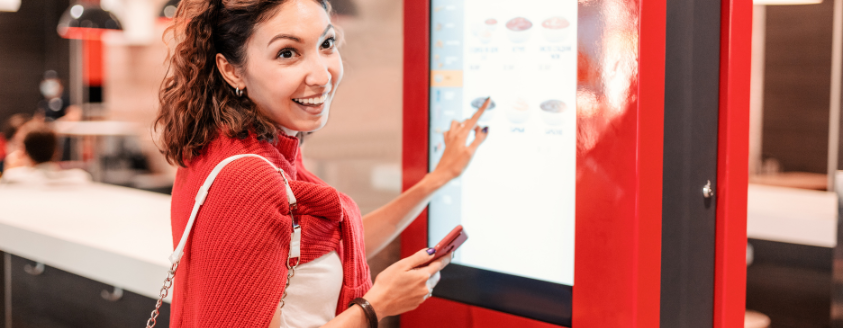
The saying ‘the customer is always right,’ is common for a reason: maintaining happy, loyal customers who keep coming back is the goal for almost every restaurant. While customer expectations have grown more nuanced over the decades, this goal has stayed the same.
However, getting a clear picture of how your customers are feeling has only gotten more difficult. To tackle the challenges of hearing customers above all the noise, building a strong voice of customer (VOC) program is critical. Listening to customer feedback helps restaurants go beyond assumptions and provides valuable insights into all parts of the business. It is essential for ensuring that your products, pricing, promotions, and overall experiences align with customer expectations and preferences.
Having spent years in the quick-service restaurant industry, I’ve seen firsthand how transformative VOC analytics can be. For example, I remember a situation where customer analytics showed a strong demand for business, yet the restaurants were at full capacity. By thoroughly analyzing both customer experience data and operational data, we identified a bottleneck at the ordering point. Customers felt that the process to order was too slow, and operational data reinforced that ordering took too long. By opening up new ordering options – there are so many today, including drive thrus, curbside pickup, mobile ordering, kiosks, and more – we were able to significantly boost capacity and improve customers’ ordering experiences. The heart of this change and the growth it created was in listening to what the customers were saying and using data to find ways to deliver on their needs.
Let’s explore more about the importance of customer feedback and how leading restaurants are leveraging multiple data sources, analyzing different customer segments, and using data to drive business growth.
Customer feedback provides valuable insights into how your customers perceive your brand and their experiences with your restaurant. It’s important to gather feedback regularly to stay in touch with how customers feel about your offerings and how their perceptions change over time. Feedback helps you identify areas for improvement, recognize strengths, and make informed decisions.
To get a comprehensive understanding of the customer experience, it’s essential to leverage multiple data sources. Different tools and methods can provide a balanced view by capturing feedback from various customer segments, such as loyal customers, frequent and infrequent visitors, and different demographic groups. Additionally, gathering feedback across all seasons, days, meals, and times—breakfast, lunch, dinner, and snacks—ensures you understand customer preferences as they relate to each possible moment in time.
Satisfying different customer segments and occasions requires prioritizing different aspects of the customer experience. For example, customers on the go may value speed and convenience, while a family looking to treat their children after a soccer game may value a friendly atmosphere and affordable meal options. Understanding these nuances allows you to tailor your offerings and services to meet the specific needs of each segment and occasion. There are several key aspects that contribute to the overall customer experience:
While all these factors are important, their significance may vary depending on the customer segment and occasion.
Different tools for collecting feedback serve different purposes, and evaluating data from a broad range of sources can help mitigate biases inherent in each. For instance, traditional customer satisfaction (CSAT) surveys offer greater control over the type of feedback you receive by presenting diners with specific questions. However, they often fall short in identifying the customers’ top priorities and may be biased if employees are responsible for soliciting responses. On the other hand, social media feedback tends to be raw and unfiltered but may focus on immediate reactions rather than giving a comprehensive assessment of the experience.
Here are some considerations for collecting and better utilizing customer feedback:
Combining different feedback sources helps balance perspectives and capture a more complete picture of the customer experience. For example, while seniors might prefer traditional CSAT surveys, younger and more tech-savvy customers may be inclined to provide feedback through social media. Understanding these preferences allows you to intentionally gather feedback from a diverse range of customers.
Marrying customer feedback with operational performance data provides a powerful tool for root cause analysis and decision-making. By analyzing feedback alongside metrics such as staffing levels, sales data, and transaction times, you can identify underlying issues and make informed changes to improve the customer experience.
Analyzing feedback in conjunction with various other data sources can provide a variety of benefits, like in the following examples:
You can also download Wavicle’s eBook about restaurant analytics and AI-driven intelligence to learn more about how to leverage analytics and AI to improve your restaurant performance.
Advanced, AI-powered tools are also available to help restaurants gain deeper insights from text data by making it easier to identify its context and sentiment. These tools can quantify unstructured customer feedback, which was previously difficult to analyze at scale, allowing restaurants to construct a detailed narrative of the customer experience. By gaining a complete understanding of what the experience was, how it made customers feel, and why it’s important, restaurants can make more informed decisions to enhance service quality and customer satisfaction.
Listening to the voice of the customer is fundamental to the success of any restaurant. By leveraging multiple data sources, understanding different customer segments and occasions, and using analytics to drive improvements, you can enhance the customer experience and drive business growth. Embracing AI-powered tools further enhances your ability to gather and analyze feedback, ultimately leading to a more responsive and successful restaurant operation.
If you’re looking to better understand customer sentiment and needs, Wavicle is here to help. Contact us to discover how analytics and AI can provide a deeper understanding of your customers’ voices and empower you to make informed decisions that drive your business forward.